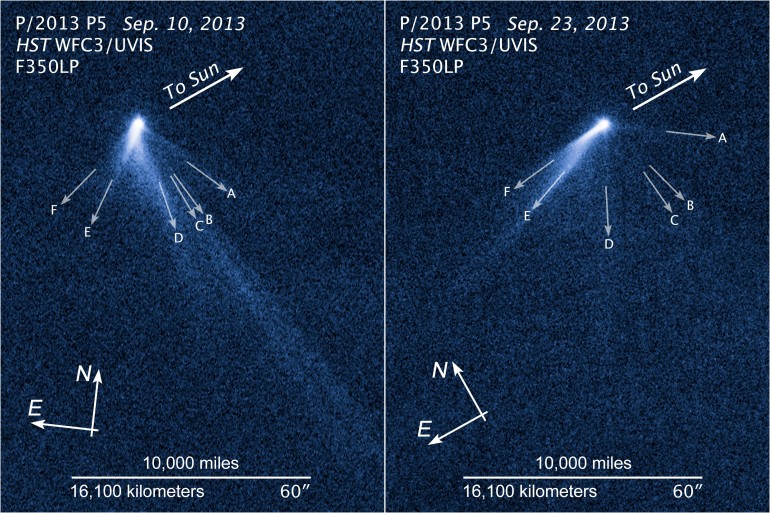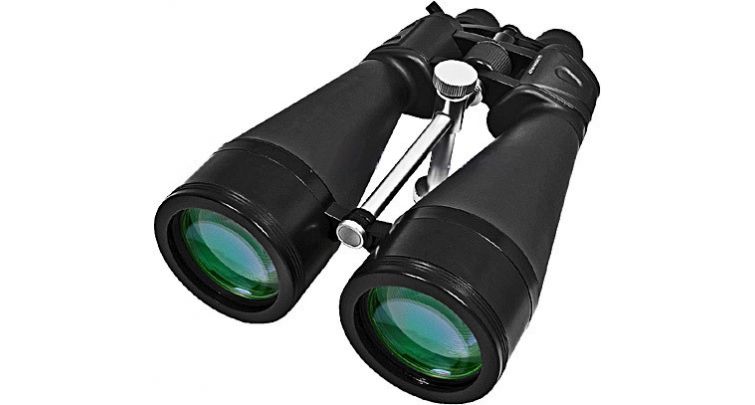



|
 |
 |
Космологија |
|
Post Reply 
|
Page <1 89101112 18> |
| Author | ||
+Protagorist 
Senior Member 

Joined: 01-Nov-2012 Online Status: Offline Posts: 3588 |
 Quote Quote  Reply
#181 Posted: 01-Dec-2013 at 12:40 Reply
#181 Posted: 01-Dec-2013 at 12:40 |
|
|
|
||
|
HaјсилнoтoOpужјe е вo caмитeHac cинaпoвo3pнo co НaдeжВepaЉубoв
|
||
 |
||
+Protagorist 
Senior Member 

Joined: 01-Nov-2012 Online Status: Offline Posts: 3588 |
 Quote Quote  Reply
#182 Posted: 30-Nov-2013 at 10:18 Reply
#182 Posted: 30-Nov-2013 at 10:18 |
|
|
haha komentarite vo videovo uste pokreativni od istoto se prasuvam sto tolku si macat glata so sekojdnevni pojavi, a duri i tie ge ftasale, pak ke brkaat skrieni muabeti, i ne deka gi nema, samo smesno deluva seta paranoja ili vozbuda po niv edit: бидејќи видеото или каналот етмскинат од тјуб еве ехо одмистото, штета без коментарите понего https://ia902808.us.archive.org/9/items/youtube_UCFjOi1ZpZVErr8EYxg8t1dQ/BUSTED!%20%20%20NASA%20FOOTAGE%20HOAX%20ON%20COMET%20ISON%20PERIHELION!-cUFq_zOz37o.webm https://www.dailymotion.com/video/x2r579o Edited by +Protagorist - 03-Nov-2018 at 22:09 |
||
|
HaјсилнoтoOpужјe е вo caмитeHac cинaпoвo3pнo co НaдeжВepaЉубoв
|
||
 |
||
+Protagorist 
Senior Member 

Joined: 01-Nov-2012 Online Status: Offline Posts: 3588 |
 Quote Quote  Reply
#183 Posted: 30-Nov-2013 at 09:44 Reply
#183 Posted: 30-Nov-2013 at 09:44 |
|
|
zosto se somnevas, ako ne dve mesecini togaj posekako dve sonca, o_O ne e sporno deka ke imame i globalen ognomet, se ceka samo na rabotna viza za taa kometa, vprocem na nea site i cekaat, iako za sekoja Edna ima tenzii so ogled deka sekoja e odrereden telal a ko glasnik se sporeduva i so postoeckite prorostva kako bi se prevtasale promenite i narod bi se podgotvil za niv, iako moe mislenje e deka udar na kometa ili asteroid ke ne resetira na poarno bidejki ne ni se pisuva arno kako trgnalo so tehnokratijava polna izvitopereni evolutivni eksperimenti :O abe ne dzabe rusite iniciraat vezbi i strategii, ili vatikan organizira opservatorii i vnatresni forumi http://kaapsevryheidsburgers.org/forum/index.php?/topic/917-astral-and-natural-disasters-comet-elinin/page__st__20 |
||
|
HaјсилнoтoOpужјe е вo caмитeHac cинaпoвo3pнo co НaдeжВepaЉубoв
|
||
 |
||
gjoko 
Senior Member 
Joined: 18-Jun-2011 Location: kicevo Online Status: Offline Posts: 6554 |
 Quote Quote  Reply
#184 Posted: 29-Nov-2013 at 21:26 Reply
#184 Posted: 29-Nov-2013 at 21:26 |
|
|
штета,вероватно во нашиот животен век нема да имаме друга прилика да гледаме `две` месечини одреден период
|
||
 |
||
+Protagorist 
Senior Member 

Joined: 01-Nov-2012 Online Status: Offline Posts: 3588 |
 Quote Quote  Reply
#185 Posted: 29-Nov-2013 at 17:33 Reply
#185 Posted: 29-Nov-2013 at 17:33 |
|
» |
||
|
HaјсилнoтoOpужјe е вo caмитeHac cинaпoвo3pнo co НaдeжВepaЉубoв
|
||
 |
||
+Protagorist 
Senior Member 

Joined: 01-Nov-2012 Online Status: Offline Posts: 3588 |
 Quote Quote  Reply
#186 Posted: 24-Nov-2013 at 23:43 Reply
#186 Posted: 24-Nov-2013 at 23:43 |
|
земи си ножето распарај срцето таму ќеси најдеш искрена лубов, и ето го прејкоа антартик и не се залубија


Edited by +Protagorist - 24-Nov-2013 at 23:44 |
||
|
HaјсилнoтoOpужјe е вo caмитeHac cинaпoвo3pнo co НaдeжВepaЉубoв
|
||
 |
||
+Protagorist 
Senior Member 

Joined: 01-Nov-2012 Online Status: Offline Posts: 3588 |
 Quote Quote  Reply
#187 Posted: 24-Nov-2013 at 20:07 Reply
#187 Posted: 24-Nov-2013 at 20:07 |
|
|
кога веќе детектирале нова група неутрина на антарик [1] ред е и тука да ги спомнеме
|
||
|
HaјсилнoтoOpужјe е вo caмитeHac cинaпoвo3pнo co НaдeжВepaЉубoв
|
||
 |
||
+Protagorist 
Senior Member 

Joined: 01-Nov-2012 Online Status: Offline Posts: 3588 |
 Quote Quote  Reply
#188 Posted: 21-Nov-2013 at 12:31 Reply
#188 Posted: 21-Nov-2013 at 12:31 |
|

Edited by +Protagorist - 15-Sep-2015 at 08:46 |
||
|
HaјсилнoтoOpужјe е вo caмитeHac cинaпoвo3pнo co НaдeжВepaЉубoв
|
||
 |
||
+Protagorist 
Senior Member 

Joined: 01-Nov-2012 Online Status: Offline Posts: 3588 |
 Quote Quote  Reply
#189 Posted: 21-Nov-2013 at 11:55 Reply
#189 Posted: 21-Nov-2013 at 11:55 |
|

колку интерактивно-дигитален може да бидне еден астероид, а колку интерактивно-аналогни може да бидеме ние додека го набљудуваме |
||
|
HaјсилнoтoOpужјe е вo caмитeHac cинaпoвo3pнo co НaдeжВepaЉубoв
|
||
 |
||
+Protagorist 
Senior Member 

Joined: 01-Nov-2012 Online Status: Offline Posts: 3588 |
 Quote Quote  Reply
#190 Posted: 21-Nov-2013 at 10:51 Reply
#190 Posted: 21-Nov-2013 at 10:51 |
|
|
впрочем оваа комета и сите претпоставки околу неа денес најверојатно будат доста сети-носталгичари кои на готово чекаат да се наситат од спознанија дремејки пред компјутер и сркајки овошни муабети со голема лајца, зар!? и ним и себе и секому би дофрлил - да пазиме да не се заскрниме во заборав, алтернатива која не е далеку од својата перипетија [1] сепак доколку е каменов НЛО тогаш е неверојатно спор модел, а единствена логична претпоставка во тој правец би била дека истиот е абер кој би посеал поздрав со својта опашка, во случај да го преживее рандевуто со нашата соларна печка и остане на ист курс кон нас! но како велат иако си го бараме со боринче, многу сметаат дека и одамна си го имаме најдено само што не е искомерцијализирано истото, колку да не избега сценариото по анархистичко-авантуристички серии
како и да е, додека едни чекаат, други дочекуваат, прашање е само што ќе дочекаме од ова камче кон кое случајно или не сите земјини телескопи се свртени New Alien Life Claim Far from Convincing - http://www.space.com/22875-alien-life-claim-space-microbes.html Extremophiles, Comets, and Alien Organisms: How did life on Earth Begin - http://www.fromquarkstoquasars.com/extremophiles-comets-and-alien-organisms-how-did-life-on-earth-begin/ Edited by +Protagorist - 15-Sep-2015 at 09:05 |
||
|
HaјсилнoтoOpужјe е вo caмитeHac cинaпoвo3pнo co НaдeжВepaЉубoв
|
||
 |
||
+Protagorist 
Senior Member 

Joined: 01-Nov-2012 Online Status: Offline Posts: 3588 |
 Quote Quote  Reply
#191 Posted: 20-Nov-2013 at 12:21 Reply
#191 Posted: 20-Nov-2013 at 12:21 |
|
|
http://spaceweathergallery.com/index.php?title=ison по инерција се закачив за цела фама околу кометава, иако на крај гледам да не се насадам на избегани теории од фиоката на дизни и компанија [1][2][3] сепак помалку ме зачешува можноста бар во живо да видиме величествен огномет од сончеви виножита та фино да воздивнеме со визуелно задоволство на почетокот од овој век, кој најверојатно уште многу што ќе донесе во блиска иднина а што ќе биде доволно космолошки фрагментирано за да и ни брцне троа поздраво во нашево сесветско политичко бунило, кое не држи турбо дури и кога сме излезени во природа, а заради што погрешно го читаме и уживаме небото, иако многу често не сме ни свесни дека постои заради нас истото... како и да ја вртиме, макар и марвеловски, кометава сеуште нема потенцијал ни на челобјанскиот болид а не па некоја повесела мистерија, иако преку последниве десетина видеа комотно може да се искали материјал за некоја интергалактичка сказна со универзални димензии! само треба креативен пристап и некој што ќе го турка институционално истиот [1] http://stateofthenation2012.com/?p=2257 Edited by +Protagorist - 20-Nov-2013 at 12:22 |
||
|
HaјсилнoтoOpужјe е вo caмитeHac cинaпoвo3pнo co НaдeжВepaЉубoв
|
||
 |
||
+Protagorist 
Senior Member 

Joined: 01-Nov-2012 Online Status: Offline Posts: 3588 |
 Quote Quote  Reply
#192 Posted: 19-Nov-2013 at 14:00 Reply
#192 Posted: 19-Nov-2013 at 14:00 |
|
|
http://waitingforison.wordpress.com/november-2013/
|
||
|
HaјсилнoтoOpужјe е вo caмитeHac cинaпoвo3pнo co НaдeжВepaЉубoв
|
||
 |
||
gjoko 
Senior Member 
Joined: 18-Jun-2011 Location: kicevo Online Status: Offline Posts: 6554 |
 Quote Quote  Reply
#193 Posted: 18-Nov-2013 at 22:37 Reply
#193 Posted: 18-Nov-2013 at 22:37 |
|
|
додека сме на оваа тема
ДАЛИ КОМЕТАТА ISON Е ПОСЛЕДИЦА НА ДЕНЕШНИВЕ ЗЕМЈОТРЕСИ ВО НИЗА ?? Кометата одеднаш се “запалила“ и нејзината светлина е зголемена, иако ѝ претстојат уште две недели на патот до Сонцето Нејзината светлина на почетокот на оваа недела како да беше во фаза на мирување, за одеднаш да блесне, пренесува порталот “Space”. 111700-kisa-meteora-reuters-xАстрономите ја мерат светлината на објектите на ноќното небо, а според пресметките, колку некој одреден објект е посветол, толку е помала неговата магнитуда. Човечкото око може да ги види објектите со магнитуда до +6,5. ISON во понеделникот на 11 ноември блескаше со магнитуда +8,5, што значи дека кометата беше премногу слаба за да се види со голо око. Меѓутоа, до средата наутро, осветленоста се зголемила на +7,3, вчера наутро “скокна” на 5.4. За само 72 часа, светлината на кометата ISON се зголемила за речиси 16 пати. “ISON драматично ја зголеми својата светлина во последните неколку дена. Според најновите согледувања нејзината осветленост е со магнитуда 5,7-6,1 . Ја набљудував утрото со двоглед, беше во форма на шекерче, со сино-зелена глава и долга, тесна опашка. Опашката беше со должина повеќе од еден степен. Нејзината светлина уште ќе зајакнува, ова е сѐ уште рана фаза”, истакна во соопштението за “Space” Karl Hergenroter, координаторот на Секторот за комети при Здружението на лунарните и планетарните набљудувачи. Кукурику.мк http://mkd-news.com/dali-kometata-ison-e-posleditsa-na-deneshnive-zemjotresi-vo-niza/ |
||
 |
||
+Protagorist 
Senior Member 

Joined: 01-Nov-2012 Online Status: Offline Posts: 3588 |
 Quote Quote  Reply
#194 Posted: 18-Nov-2013 at 22:21 Reply
#194 Posted: 18-Nov-2013 at 22:21 |
|
|
||
|
HaјсилнoтoOpужјe е вo caмитeHac cинaпoвo3pнo co НaдeжВepaЉубoв
|
||
 |
||
+Protagorist 
Senior Member 

Joined: 01-Nov-2012 Online Status: Offline Posts: 3588 |
 Quote Quote  Reply
#195 Posted: 11-Nov-2013 at 01:48 Reply
#195 Posted: 11-Nov-2013 at 01:48 |
|
|
Russian's Report: Comet ISON Acts Like Intelligently Controlled Alien Spacecraft - /http://www.educatinghumanity.com/2013/09/comet-alien-ufo-spacecraft.html |
||
|
HaјсилнoтoOpужјe е вo caмитeHac cинaпoвo3pнo co НaдeжВepaЉубoв
|
||
 |
||
+Protagorist 
Senior Member 

Joined: 01-Nov-2012 Online Status: Offline Posts: 3588 |
 Quote Quote  Reply
#196 Posted: 10-Nov-2013 at 17:13 Reply
#196 Posted: 10-Nov-2013 at 17:13 |
|
|
велат чудно мене ми личи многу нормално - http://theskylive.com/ison-tracker [1] http://www.isoncampaign.org/mmk/what-might-happen - http://astronomia.udea.edu.co/cometspage/index.html#5._CONCLUSIONS
Edited by +Protagorist - 11-Nov-2013 at 00:40 |
||
|
HaјсилнoтoOpужјe е вo caмитeHac cинaпoвo3pнo co НaдeжВepaЉубoв
|
||
 |
||
+Protagorist 
Senior Member 

Joined: 01-Nov-2012 Online Status: Offline Posts: 3588 |
 Quote Quote  Reply
#197 Posted: 13-Oct-2013 at 08:24 Reply
#197 Posted: 13-Oct-2013 at 08:24 |
|
|
|
||
|
HaјсилнoтoOpужјe е вo caмитeHac cинaпoвo3pнo co НaдeжВepaЉубoв
|
||
 |
||
+Protagorist 
Senior Member 

Joined: 01-Nov-2012 Online Status: Offline Posts: 3588 |
 Quote Quote  Reply
#198 Posted: 12-Oct-2013 at 20:12 Reply
#198 Posted: 12-Oct-2013 at 20:12 |
|
|
едноставно објаснување за астероидната месечина - http://holographicgalaxy.blogspot.com/2013/09/moons-like-titan-orbit-by.html + едноставно објаснување за Примитивни Астероиди - “Primitive” in regard to asteroids means original material formed at the beginning of the solar system that’s been little altered by heat or pressure - http://astrobob.areavoices.com/2013/08/20/why-you-should-care-about-asteroid-101955-bennu/ |
||
|
HaјсилнoтoOpужјe е вo caмитeHac cинaпoвo3pнo co НaдeжВepaЉубoв
|
||
 |
||
+Protagorist 
Senior Member 

Joined: 01-Nov-2012 Online Status: Offline Posts: 3588 |
 Quote Quote  Reply
#199 Posted: 06-Oct-2013 at 11:23 Reply
#199 Posted: 06-Oct-2013 at 11:23 |
|
|
да не рекламирам, но посекако ќе најдеш иако мое мислење е да пазариш на старо по нет со оглед дека има супер ефтини работи а претходно и да се информираш добро со оглед дека ко што посочуваш има и нови а ефтини ем добри за тие пари [1][2] плус нема да те боли срце ко за џилитка ново огледалце! туку налетав на супер информативни видеа апропо ЕУ-теоријата believed or not |
||
|
HaјсилнoтoOpужјe е вo caмитeHac cинaпoвo3pнo co НaдeжВepaЉубoв
|
||
 |
||
phenomenon 
Senior Member 
Joined: 26-Oct-2010 Location: Kumanovo Online Status: Offline Posts: 2691 |
 Quote Quote  Reply
#200 Posted: 02-Oct-2013 at 18:38 Reply
#200 Posted: 02-Oct-2013 at 18:38 |
|
|
Благодарам за информациите. Убаво прочитав сѐ плус најдов уште еден доста корисен сајт:
http://www.scopemaking.net/hrv/prviscope.htm Туку, од она што ми го постираше, ми падна в очи овој двоглед: Barska 25-125x80 Gladiator Zoom Binoculars  Barska Gladiator 25-125 x 80 Binoculars are the powerful zoom binoculars with different magnifications. Barska 25-128x80 Gladiator Zoom Binoculars AB10594 offer imagethe added advantage of enjoying multiple magnifications in a single binocular. Barska 25-125x80mm Gladiator Zoom Binoculars feature multi-coated optics for sharper and crisp images and rugged design with improved traction holding. Large 80mm objective lenses of Barska Gladiator Binoculars AB10594 for increased light transmission allow viewing under the darkest conditions. Barska 25-125 x 80mm Gladiator Binocular is tripod adaptable to fit for a steady view. With Barska Gladiator Zoom Binoculars 25-125 x 80 mm you can capture a panoramic view at low power, target in on your object and then zoom in to a higher power to capture the finer details. The zoom mechanism on Barska 25-125x 80mm Gladiator Binocular is smooth and easy to operate with a flick of the lever. It?s like having many binoculars in one! Gladiator Zoom Binoculars by Barska are the perfect companion for all outdoor activities and sporting events. A може и овој: Celestron SkyMaster 25-125x80
The Celestron SkyMaster 25-125x80 Zoom Binocular 71020 is a phenomenal value for high performance binoculars. Каде може да се набавaт вакви двогледи во Македонија? И дали кај нас воопшто постои двоглед со зголемување поголемо од 21х, а да е бинокуларен двоглед, да не е дневен телескоп? Edited by phenomenon - 02-Oct-2013 at 18:50 |
||
|
開始されていないだけの戦いが失われ、
|
||
 |
||
Post Reply 
|
Page <1 89101112 18> |
| Forum Jump | Forum Permissions  You cannot post new topics in this forum You cannot reply to topics in this forum You cannot delete your posts in this forum You cannot edit your posts in this forum You cannot create polls in this forum You cannot vote in polls in this forum |